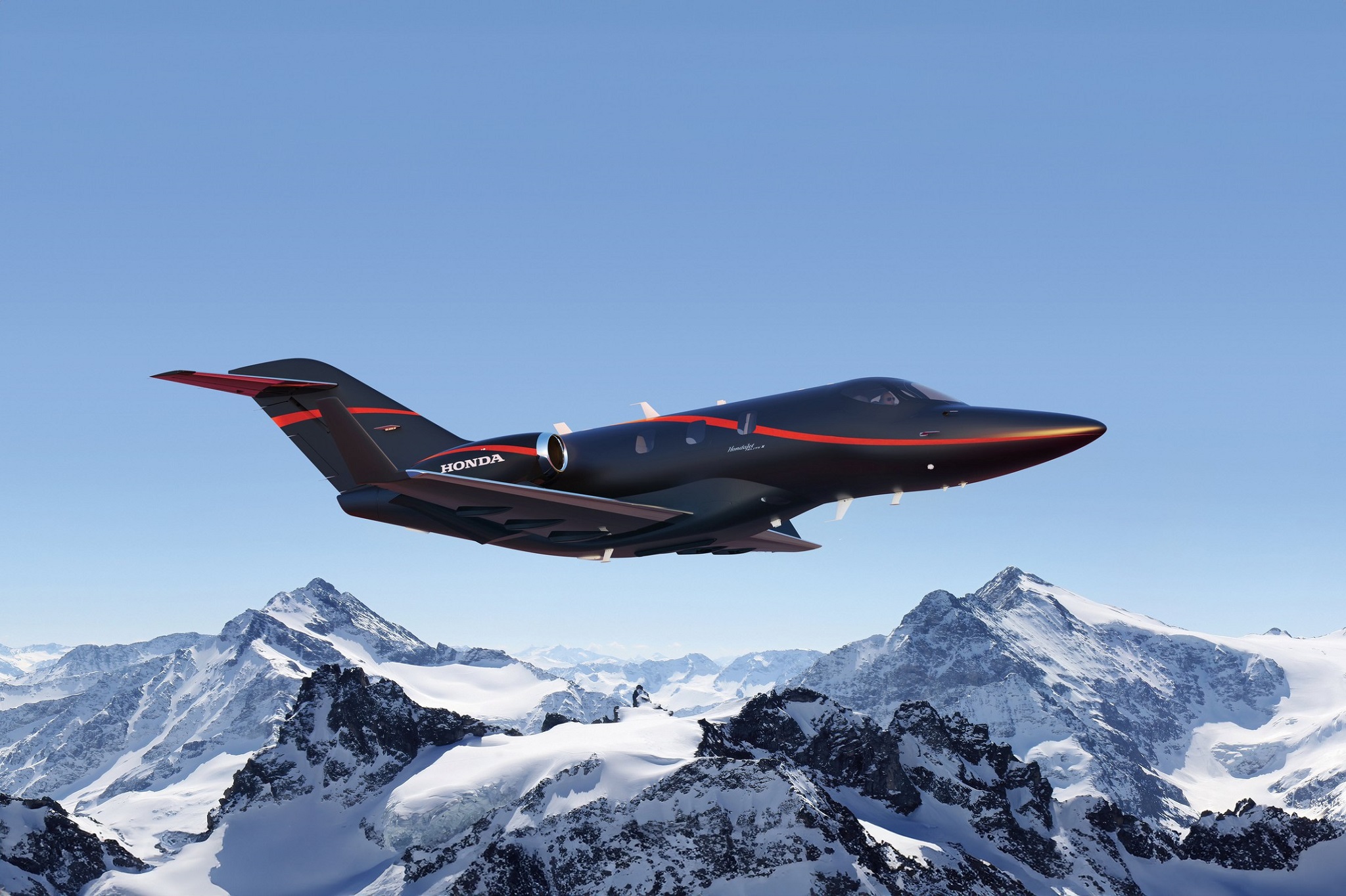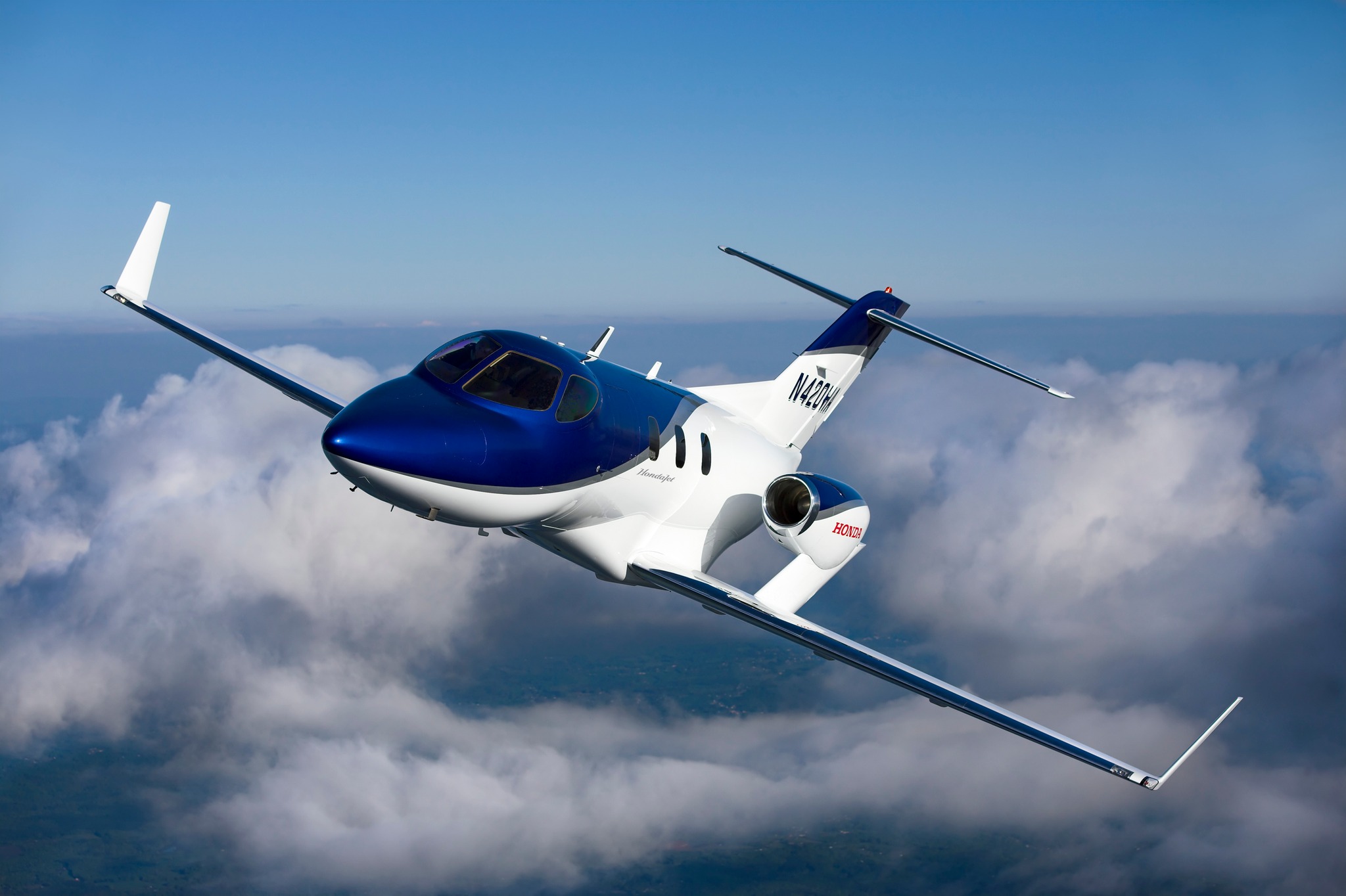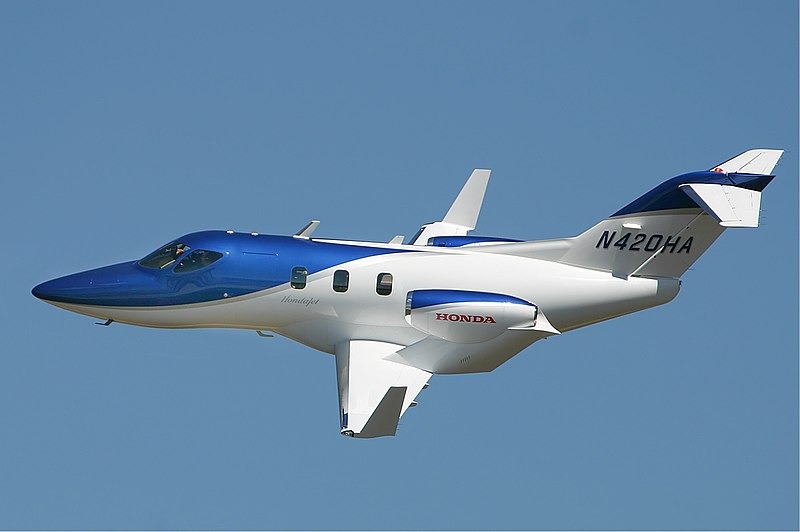Within the segment of light business aviation, the HondaJet stands out as a model of technological innovation. The well-known Honda Aircraft Company created it, marking a substantial performance and design advancement. This article explores the unique qualities of the HondaJet, emphasizing its speed, luxurious interior, and Over-The-Wing Engine Mount (OTWEM) design. We examine how these developments not only improve comfort and efficiency but also establish new benchmarks for the sector.
1. Background of Development
Leading the way for the HondaJet was Michimasa Fujino, who went on to become the CEO of Honda Aircraft Company. With this project, Honda made a bold entry into the aviation industry by utilizing its wealth of technological and engineering know-how. The project aimed to develop a light business jet that would demonstrate Honda’s engineering prowess and change the aviation sector. The goal was to build a jet with ground-breaking design innovations, superior performance, and fuel efficiency.
2. Design and Features
The Over-The-Wing Engine Mount (OTWEM), a unique configuration that distinguishes the HondaJet from other jets in its class, is one of the most striking design features of the aircraft. This design lowers cabin noise while increasing aerodynamic efficiency. The aircraft’s high performance is a result of its aerodynamic, sleek profile, which includes its streamlined nose and tapered wings. The HondaJet has an opulent interior with a fully furnished galley, plush executive seats, and noise cancellation technology. With its cutting-edge avionics and touch-screen interfaces, the cockpit makes navigation and flight operations easier for pilots.
3. Performance
The HondaJet performs exceptionally well for its class. It is regarded as one of the fastest jets in the light jet class due to its remarkable speed. Additionally, the aircraft has a good range, making it appropriate for personal and business travel requirements. Its fuel efficiency, which comes directly from its lightweight construction and creative aerodynamic design, is an important part of its performance.
4. Production and Variants

Photo credit: instagram.com
A major turning point for Honda Aircraft Company was reached in December 2015 with the delivery of the first production model of the HondaJet. Since then, a number of versions have been released, such as the HondaJet Elite, which has improved interior features, avionics, and range. By satisfying a variety of consumer demands and tastes, these variations highlight Honda’s dedication to ongoing innovation in the aviation industry.
5. Market Position and Reception
Within the market for upscale light business jets, HondaJet has established a distinct niche. It has garnered praise for its performance, design, and technological advancements and has been warmly welcomed by the industry. The aircraft has won numerous accolades, highlighting its influence on the industry and reaffirming Honda’s standing as a pioneer in engineering and innovation.
6. Environmental and Technological Innovations
Honda Aircraft Company is committed to making the HondaJet environmentally friendly. Compared to other jets in its class, the aircraft is designed with lower emissions and noise levels, making it an environmentally friendly aircraft. Honda keeps spending money on research & development activities, concentrating on implementing new technology to improve HondaJet’s capabilities and hold onto its top spot in the market.
7. Price
Regarding cost, the HondaJet is positioned in the light jet market as a high-end product. The model and customizations have an impact on the price. Because of its superior features and status as a luxury vehicle, the base model is reasonably priced for its class.
The cost of acquiring a Honda Jet usually falls within the range of $5 to $6 million, which is double the price of a comparable competitor like the Phenom 100. When taking into account market depreciation and calculating the total annual cost, the Honda Jet will end up costing the buyer approximately $1.1 million.
8. Worldwide Reach

Photo credit: instagram.com
With more sales and service locations across the globe, the HondaJet is becoming more and more visible on the international scene. This global expansion is a result of the jet’s popularity in various markets and ability to meet a range of aviation requirements. Owners and operators of HondaJets can always get support and services thanks to Honda’s extensive global network.
FAQs
What are the key features of HondaJet?
What is the performance of HondaJet?
How many passengers can HondaJet accommodate?
Sergey Ryabtsev. (2005). HondaJet [Image]. Wikimedia Commons. Wikimedia Commons
